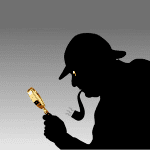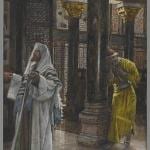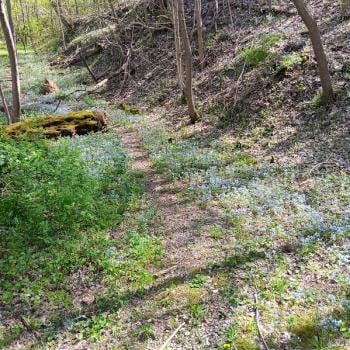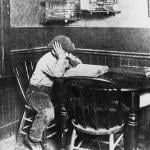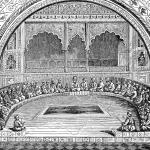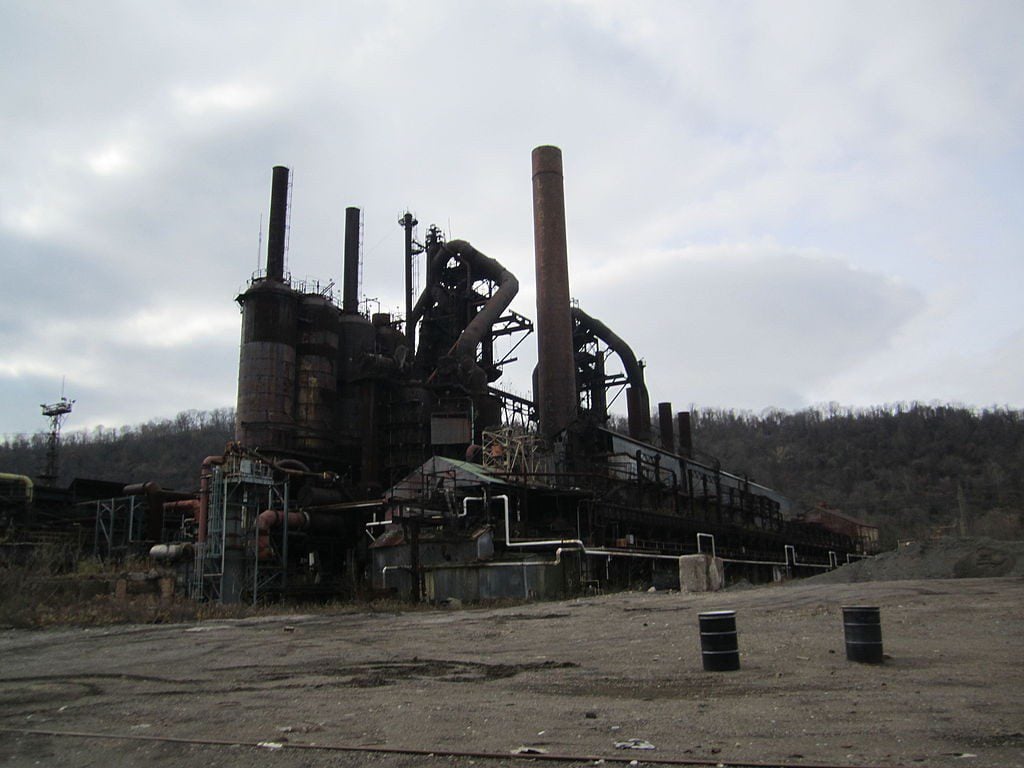
I once met a lady who came to the Ohio Valley from Europe. She’d raised her children in south Burgundy and then come to Steubenville to study at the University. “When I first came here,” she told me, “I missed beauty so much it physically hurt.”
I have been here thirteen years, and felt the same way.
I did see some beauty today, however. I drove to Bridgeport with my driving instructor to take my driving test.
There’s no testing station at the local BMV; the closest one is in Bridgeport. I was excited for a trip out, excited to finally be licensed and perhaps get a car, excited to not be spending anymore of Rosie’s godparents’ money on lessons. But I was also terribly nervous.
We drove along the Ohio, where the Dean Martin Boulevard turns into Route Seven. You could take Route Seven all the way down past the chimney of West Virginia to where it turns the bend, if you wanted to, or cross the bridge at Wheeling and drive deep into the heart of Appalachia where the real mountains worth seeing are. You could take Route 7 to i-70 and end up back in Columbus where I grew up. But we were only driving to Bridgeport. The instructor had left his radio on and I didn’t turn it off. It was my first time ever driving with music, and I liked it.
It was a perfect day for a long drive– cool, overcast so not blindingly bright, and the roads weren’t crowded. On an overcast day, the Ohio river doesn’t look as ominously rusty but deep gray-black with just a hint of red. I call that color “wine-dark,” though I can’t imagine it’s the exact color Homer originally meant. The trees are at their absolute peak: a riot of scarlet, orange and gold. Against the slate sky and the wine-dark Ohio, you couldn’t ask for anything more glorious. It was hard to keep my eyes on the road.
There is loveliness in the Ohio Valley, in among the decay. Everything that is allowed to live is breathtakingly lovely.
It’s only that life is not valued here.
We drove past dark satanic mills with white clouds quietly smoldering from smokestacks. Most of the plants along the Ohio are closed, collapsing into rusted heaps, but some are still working. The people around here like them. They don’t believe in climate change. Our summers and winters have always been so erratic that they refuse to notice that’s gotten worse. I sometimes hear them chattering on the bus, about how it’s all “a myth invented by the democrats to make money.” They say that they learned in elementary school that carbon dioxide makes trees happy, and that means the scientists are lying. But of course the people here don’t like trees either– I’ve never seen a culture that hated trees more. In my thirteen years in Steubenville, I have seen tree after tree cut down for the most trivial reasons.
“The bees kept buzzing in my window,” I heard one of them complain, and then they murdered a glorious redbud to keep the bees from enjoying the blossoms.
Nobody likes bees here.
These are people who would rather take a life than put in a screen.
We had to drive through Martin’s Ferry where the hospital used to be. It just closed this year, dismaying everyone who will have to drive to Wheeling for emergency care now. But money is money. There was money to be made by its closing. Money, unlike life, has value.
That hospital is where Rosie was born on the worst night of my life, and I haven’t had a reason to go back. The midwife, the rapist who tore me up so badly it hurt to go to the bathroom for months, liked to cover her tracks by dumping her victims in emergency rooms far from their actual homes so no one hospital had an accurate number. Her accomplice drove me to Martin’s Ferry instead of the Steubenville emergency room after twenty-seven hours of ruptured membranes, when the overdose of labor-inducing herbs started making Rosie rocket backwards up into my diaphragm in agonizing pain. I had to beg her to drive me anywhere at all– she told me she was going to make me wait another day unsupervised in the apartment, screaming.
The midwife’s accomplice kept trying to blackmail me into not screaming by saying I was suffocating Rosie by my screams, but I couldn’t stop. She also instructed to lie to me to the doctor about how long my membranes had been ruptured and say it was only a few hours. The doctor made fun of me for trusting the midwife the whole time he was cutting me open. It was his second botched birth from the same con artist midwife that night.
I drove through Martin’s Ferry in silence.
It looks different in daylight when you’re driving, instead of lying sideways in the back of a stranger’s van just before dawn. It’s not exactly an aesthetic place, but there are houses there. There are shops. Human beings live their lives in Martin’s Ferry, and there’s always beauty where there is life.
Bridgeport was the next exit.
It has the worst roads I’ve ever seen in my life.
I passed the first portion, the road test, somehow, by exactly one point. That’s over with forever and I don’t have to retake it.
On the second half, the dreaded state of Ohio maneuverability test, I knocked over the very last bright orange cone and failed.
I can’t tell you how many hundred times I’ve repeated to myself in the past few hours that most people in Ohio fail the maneuverability test the first time– that I lived til age thirty-five somehow, despite all the near-death scrapes I’ve had in a place that values life least of every conceivable good, and I ought to be proud of myself for even being half-done with driving tests and getting this far. But I don’t believe myself yet.
We drove back quietly.
My anxiety melted now that there was nothing to anticipate. I can’t even re-take the test for a week. I enjoyed the trees and the music. I cringed from Martin’s Ferry and the smokestacks.
Route Seven became the Dean Martin Boulevard again. I turned up University Boulevard, back to LaBelle, the ugly neighborhood whose name means “the beautiful.”
I miss the beautiful so much, it physically hurts.
(image via wikimedia commons)
Steel Magnificat operates almost entirely on tips. To tip the author, visit our donate page.


